Dr. Anil Kumar Angrish

Nidhi Bindal
Competitive Intelligence (CI) is the process of gathering data, converting it into clean, useful information, and analyzing it to generate actionable insights. CI is an amalgam of art and science dedicated to developing strategic plans for gathering, analyzing, and distributing business-relevant information. The goal of CI is to help companies stay ahead of competitors and other market disruptions. As an art, it involves creativity and intuition to interpret data, identify patterns, and anticipate market shifts. CI relies on rigorous methodologies, tools, and technologies to collect and analyze data, making predictions more reliable so it is considered a Science too. Hence, CI is the collective term for the ‘activity of monitoring the competitive landscape in general and competitors in particular’. A common misconception is that CI is a one-size-fits-all solution or that it involves unethical spying on competitors. In reality, it requires specific analysis which is tailored to each situation and is conducted ethically and legally.
There are multiple information sources for CI firms which include syndicated industry reports, market reports, and therapy-specific pipeline insight reports. A Syndicated Industry report provides broad overview of current trends and market opportunities. Syndicated Reports are found useful in understanding the current trends, potential growth areas, future outlook. Information provided by these reports comprise, current market size, forecast based on growth rate assumptions, market size view based on dosage forms, geography, key trends, growth drivers, industry mergers & acquisitions etc. Market reports provide detailed insights into specific therapeutic segments. It may cover market landscape, growth opportunities, top companies, pipeline, case studies/strategies adopted by different companies, etc. Therapy-specific pipeline insight reports focus on the current treatment landscape and emerging drugs in clinical trials. CI firms publish the reports regularly on paid basis and on their website to generate interest from the consumers. These reports cover disease overview, overall therapy area, existing/current landscape, current treatment gaps, emerging drugs in Clinical Pipeline including Phase I, II and III or Clinical Trial Analysis.
Alternatively, sources of information are classified as ‘White’, ‘Gray’ and ‘Black’. Databases, newspapers, and other public sources are considered part of White sources of information. Pharmaceutical companies use keyword searches, literature reviews, access regulatory databases of different countries, e.g., the USFDA, clinical trials databases, healthcare reports and publications, social media analysis, annual reports, investors’ presentation, Draft Red Herring Prospectus (DRHP), among others. Gray sources include trade exhibitions and publications which are in the public domain but yet are overlooked by competitors. Salespeople visit businesses to gather such information on their rivals. This may comprise interviewing knowledgeable subjects, Key Opinion Leaders (KOLs) interaction, direct conversation with key sources of information such as clinical trial coordinator, company presentations to investors, etc. Gossiping, political networking, employee shift to competitor’s organization, etc is considered part of Black sources.
Pharmaceutical CI is both present-focused and future-focused. It plays an important role in analyzing current scenarios, and also helps in predicting competitors’ future moves by analyzing R&D strategies, product development, business development, marketing, and pricing strategies. Michael Porter (1980) emphasized on the importance of an external environmental viewpoint in intelligence collection for future-focused executives. His key questions to consider included: (a) What is driving the industry? (b) What actions are competitors likely to take, and how should we respond, and (c) How will the industry evolve, and how can a firm position itself for long-term success?
In pharmaceutical industry, CI is a crucial tool which helps companies in making smart decisions by combining creativity and detailed analysis. It is being applied throughout the entire product life cycle, from developing new drugs to entering the market and beyond. In pharmaceutical sector, companies spend heavy amount in R&D so as to bring new drugs to market. Further, it takes 8 to 12 years to discover, develop and launch a new drug, with many decisions made under uncertain conditions. Pharmaceutical product life cycle spans about 20 years from initial discovery to the post-patent period. CI in the pharmaceutical industry differs from other industries as it is highly regulated industry that creates significant barriers to entry. In pharmaceutical industry, competition is disease-specific or therapy-specific. Pharmaceutical industry operates under strict regulations, so significant information about competitors is publicly available. Nature of customers in this industry is complex as the industry serves a unique set of customers, including physicians, patients and the governments. Further, nature of products is technical as medicines are highly specialized products used by medical professionals, adding a layer of complexity to the competitive landscape.
In pharmaceutical industry, CI firms use multiple tools to derive insights, and Key Intelligence Questions (KIQs)/Key Intelligence Topics (KITs) figure prominently. KIQs and KITs need to be specific and actionable from strategy point of view. KITs typically fall into three categories, i.e., Strategic decisions and actions including the development of strategies and strategic plans, Early warnings including competitor initiatives, technological surprises and government actions; and description of key players in market place including competitors, suppliers, regulators and potential partners. KIQs are a grouping of main questions which the company wants to answer about competitors and the competitive environment so as to reduce its decision-making risk. Besides this, Porter’s Four Corner Analysis, Scenario Planning, Market Mapping, War Gaming, Competitive simulations, Porter’s five forces model, Benefit Ladder, Benchmarking, etc. are also widely used tools by CI firms in pharmaceutical sector.
For pharmaceutical companies, CI offers several benefits. It helps companies adhere to the ‘fail early, fail fast’ principle by tracking competitors’ failures, thereby avoiding similar mistakes and saving resources. Companies get to know about the latest breakthrough therapies and trials, thereby allowing them to adjust their drug development plans accordingly. It can play crucial role for generating insights into R&D synergies, operational metrics, risks involved in Mergers and Acquisitions, and licensing deals. CI can help pharmaceutical companies stay updated on trends and developments so as to facilitate companies’ pipeline assets and optimization of resource utilization. CI can be helpful in better brand position as it provides insights into competitor brand messaging, target areas, geographical reach, marketing activities, and sales force strength.
As stated earlier, Competitive Intelligence must not be confused with industry espionage as industry espionage, or corporate espionages is the act of spying on or stealing confidential information from competitors to gain a competitive advantage which includes theft of proprietary technologies, trade secrets, research data, and intellectual property. In pharmaceutical industry, there are significant investments in R&D so it is vulnerable to such activities. For example, Hsu Kai-Lo and Chester Ho were arrested for stealing plant cell culture technology specific to the drug Taxol in Bristol-Myers Squibb (1997) espionage case. Most recently, in 2020, there were multiple cases. In December 2020, cyber attackers accessed and leaked documents related to Pfizer/BioNTech vaccine regulatory submissions when European Medicines Agency came under cyber attack. In another case, hackers from North Korea posed as job recruiters on LinkedIn and WhatsApp to gain access to AstraZeneca staff computers. In a similar case, North Korean hackers tried to steal vaccine information from Johnson & Johnson, Novavax, and three South Korean drugmakers. This has implications for pharmaceutical companies, e.g., a report by IBM Report and the Ponemon Institute (2020) stated that average cost of a data breach in the pharmaceutical industry exceeds $5 million. Latest report in its 18th year – the IBM Cost of a Data Breach Report (2023), revealed that the costliest breaches occur in healthcare ($10.93Mn), financial ($5.9 Mn), pharmaceuticals ($4.82 Mn), energy ($4.78 Mn) and industrial ($4.73 Mn). Besides financial loss, there is reputational damage, competitive disadvantage, and operational disruptions.
Global pharmaceutical MNCs have dedicated Competitive Intelligence teams. Eli Lilly, Novo Nordisk, J&J, Merck, AbbVie, Novartis, AstraZeneca, Pfizer, Roche, Amgen, Sanofi, BMS, Vertex Pharma, Regeneron Pharma, Gilead, CSL, GSK, Daiichi Sankyo, Takeda and Moderna have dedicated CI teams in one or other name. Global Pharma MNCs consistently maintain robust CI divisions whereas Indian pharmaceutical firms lack dedicated CI teams. Certain pharmaceutical companies operating in Indian Pharmaceutical Market (IPM) have designated heads or roles related to Competitive Intelligence, e.g., Head, Business Intelligence division in Abbott, Business Analytics Team in Cipla, Mankind Consulting Services LLP in Mankind Pharma, Sales Force Management and Business Analytics Team in Alkem, Strategy & Analytics Team in Intas, Lupin Analytics in Lupin, Business analytics in Macleods, Portfolio Strategy & Innovation (Competitive Intelligence at Dr. Reddy’s Labs, to name top pharmaceutical companies. It has been observed that hierarchical integration of Competitive Intelligence within management structure ensures strategic alignment and informed decision-making.
Many independent firms render CI services along with their other core services. For example, Evaluserve has Market and Competitive Intelligence as Core services including in-depth patent and innovation intelligence. The company claims to leverage Artificial Intelligence (AI) and Machine Learning (ML) to gather and analyze data from over 200,000 sources, including news articles, financial filings, social media, and industry reports. Evaluate Pharma provides customized reports on Competitive Landscaping, in-depth conference coverage and action-oriented CI workshops. Atacana has core services which include Continuous Threat Assessment, Deep Dive and Analysis (Anticipate Market Trends & Competitor Moves), strategic workshops which comprise Scenario Planning, War Gaming and Simulations. The services offered by WNS (Saas-based Pharma CI Solution – Precizon) include CI News Monitoring, Competitive Landscape and Pipeline Intelligence, Clinical Landscape Intelligence, Go-to-Market (GTM) strategy, etc. Flatworld Solutions as well as Outsource2India offer services which include Competitor R&D Strategy, Competitor Product Pipeline, Competitor Product Lifecycle Management, Competitor Product Launch Timing, Competitor Sales Force Assessment, Competitor Distribution and Marketing Channels, Competitor Key Messaging, and Competitor Target Identification. Clarivate Analytics offers solutions for Competitive and Business Intelligence Research which include Patent Landscape Analysis, Market Access Solutions, Health Technology Assessment (HTA) Intelligence etc. There are many other firms such as Acuity Knowledge Partners, DelveInsight, AlphaSense, AdametNext which offer CI services. These CI firms provide their clients with critical insights and strategic guidance, helping them navigate complex markets, anticipate competitor moves, and make informed decisions to achieve competitive advantage.
CI has immense scope for enhancing efficiency and strategic decision-making. Many areas remain unexplored, e.g., at R&D phase, a lack of CI in the early stages of R&D can result in duplicated research efforts and missed chances to innovate based on competitor actions and market trends. Regarding Clinical trials, without real-time intelligence on competitor clinical trials, companies may face strategic missteps and delays in market entry. Pharmaceutical companies and CI firms dealing in pharmaceutical domain need to develop a strong regulatory intelligence framework. Without benchmarking against competitors, manufacturing processes may become inefficient, impact cost and quality. Poor understanding of competitor marketing strategies can lead to ineffective positioning and market penetration. Competitive Intelligence has become much more than eyes and ears of pharmaceutical companies.
Dr. Anil Kumar Angrish, Associate Professor (Finance and Accounting), Department of Pharmaceutical Management, NIPER, SAS Nagar (Mohali), Punjab
Nidhi Bindal- MBA (Pham.), Department of Pharmaceutical Management, NIPER, SAS Nagar (Mohali), Punjab
Disclaimer: Views are personal and do not represent the views of the Institute.






